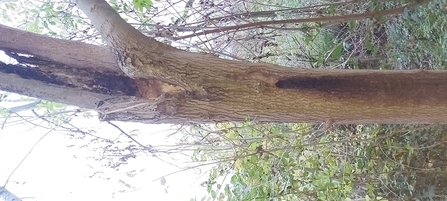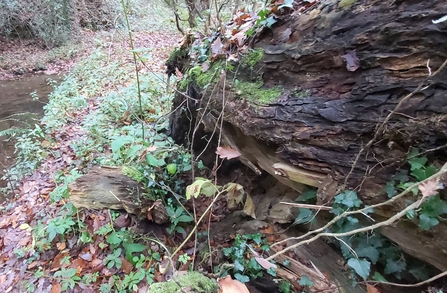Before any site work starts a great deal of the reserves' staff time and attention is put into identifying any potential setts, roosts, nests or habitats favoured by protected species such as badgers, bats, dormice, great crested newts, white clawed crayfish and otters. We can then ensure there is minimal chance of disturbance to these animals and no wildlife crimes are committed when reserve management takes place.
Potential or existing bat roosts can often be easily recognised, especially as many bats like to hang out in old or rotten trees. The decaying ash tree in the photo, taken at Wern Wood nature reserve, with dark staining beneath an entry/exit hole (probably an old woodpecker nest) indicates this tree has been or is still a favourite roost for bats. Definitely a tree to keep and also maintain a zone of no felling around it.



